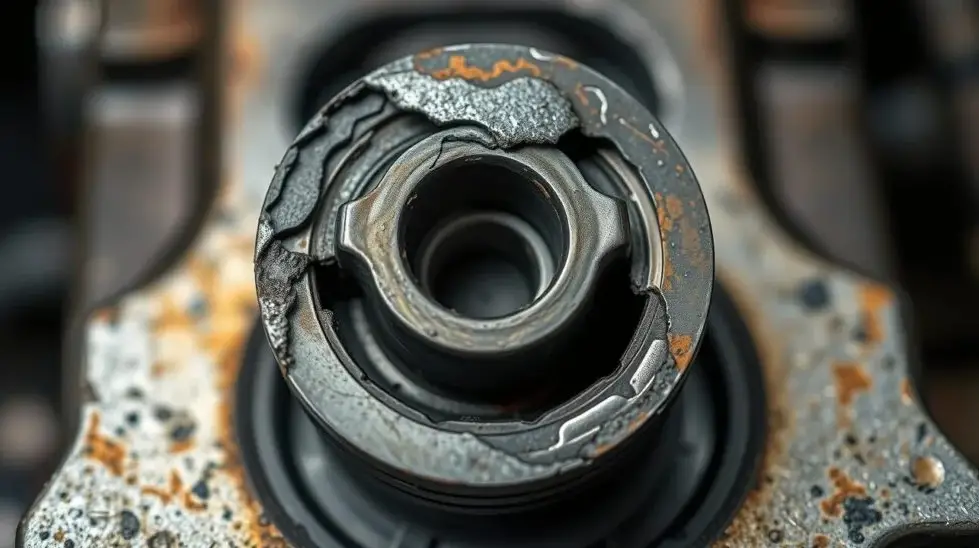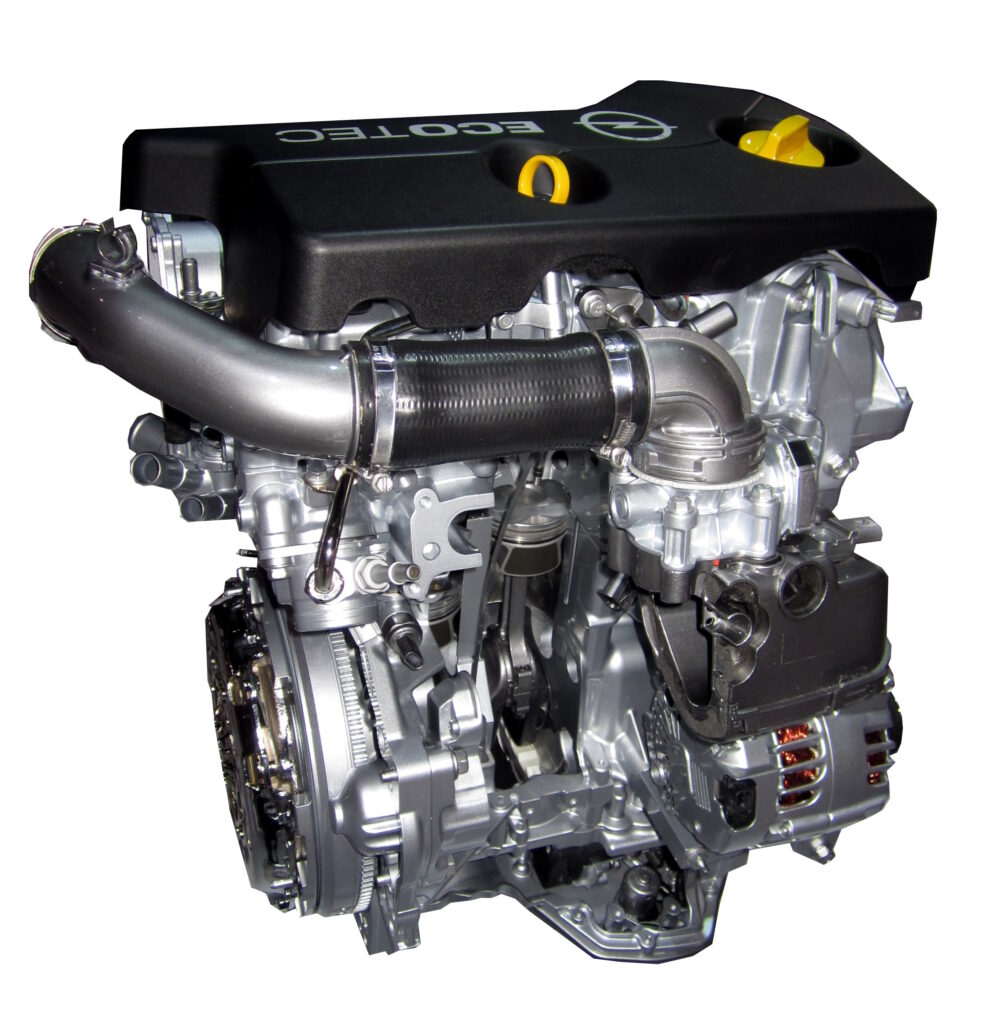GM 1.5 turbo engine problems include turbo failure, high oil consumption, and piston damage. These issues can affect reliability and performance. Regular maintenance helps prevent major repairs.
The GM 1.5L turbocharged engine, part of General Motors’ Small Gasoline Engine (SGE) family, was introduced as a balance of performance and fuel economy. Found in popular models such as the Chevrolet Malibu, Equinox, GMC Terrain, and Buick Encore GX, it became a go-to option for consumers looking for a fuel-efficient yet responsive ride.
However, like many modern turbocharged engines, the 1.5L turbo hasn’t been immune to mechanical issues. Over the years, several problems have surfaced that can impact performance, reliability, and long-term ownership costs.
In this article, we’ll take an in-depth look at these common problems, what causes them, how to fix them, and whether this engine is still worth considering.

Contents
GM 1.5L Turbo Engine
The 1.5L Ecotec turbo engine is a four-cylinder engine with direct fuel injection and dual overhead camshafts (DOHC). It delivers about 160 horsepower and 184 lb-ft of torque, and its small displacement with forced induction makes it ideal for fuel efficiency in daily-driving vehicles.
Despite its promising specs, real-world performance and longevity have drawn criticism due to multiple recurring issues. Whether you’re considering buying a used model or are an existing owner, being aware of these problems is essential.
Common GM 1.5 Turbo Engine Problems
Here are the most frequently reported issues:
1. Turbocharger Failures
One of the most notorious issues with the GM 1.5 turbo engine is premature turbocharger failure. This is especially prevalent in colder climates. Moisture can accumulate in the air intake and freeze, restricting airflow to the turbocharger. When this happens, the turbo can overwork, leading to a reduction in power or triggering the “Limp Mode” to protect the engine.
Symptoms:
- Loss of power during acceleration
- Unusual whining or whistling noises
- Check Engine Light (CEL)
- Reduced fuel efficiency
Fixes:
- Radiator covers to protect the intake from freezing
- Turbocharger replacement ($1,000–$2,500 depending on labor and parts)
2. Oil Consumption and Oil Dilution
Excessive oil consumption has been a well-documented complaint. Some owners report having to top off oil frequently between service intervals. More concerning is oil dilution caused by fuel mixing with oil due to short trips or poor piston ring sealing.
Risks:
- Accelerated engine wear
- Timing chain degradation
- Turbocharger oil starvation
Fixes:
- Regular oil checks
- Switch to high-quality full synthetic oil
- ECM software update (available for some model years)
3. Piston Cracking and Pre-Ignition (SPI)
Stochastic Pre-Ignition (SPI) is a known problem in modern turbocharged engines. It occurs when the air-fuel mixture ignites before the spark plug fires. This can lead to cracked or melted pistons. The GM 1.5L turbo is not exempt.
Symptoms:
- Engine knocking or pinging
- Poor acceleration
- Misfires and rough idle
- Loss of compression
Fixes:
- Engine rebuild or replacement (in severe cases)
- Use high-octane fuel to reduce SPI
- Engine control module (ECM) update to adjust timing and fuel mixture
4. Overheating Issues
Overheating in the 1.5 turbo engine is often caused by:
- A faulty thermostat
- Leaking water pump
- Failing radiator
- Air pockets in the cooling system
Overheating can lead to a blown head gasket or warped cylinder heads.
Fixes:
- Coolant system pressure test
- Thermostat and water pump replacement
- Proper bleeding of the cooling system
5. Intake Valve Carbon Buildup
Since the GM 1.5L turbo engine uses direct injection, fuel is sprayed directly into the combustion chamber, bypassing intake valves. Without the cleaning effect of fuel washing over the valves, carbon deposits build up over time.
Symptoms:
- Rough idle
- Misfires
- Decreased fuel efficiency
- CEL for misfires (P0300-P0304 codes)
Fixes:
- Walnut blasting or chemical cleaning every 60,000–80,000 miles
- Use top-tier fuel and fuel additives periodically

Additional Reported Issues
Here’s a breakdown of the additional reported issues with the GM 1.5L Turbo engine (commonly found in models like the Chevrolet Equinox, GMC Terrain, and Chevrolet Malibu). While the 1.5L turbo is praised for its efficiency, several real-world complaints and patterns have emerged over the years.
Timing Chain Stretch
Timing chain wear has been reported in engines with poor oil maintenance or prolonged oil change intervals. A stretched chain can lead to poor timing, CEL, or catastrophic failure.
Weak PCV System
The positive crankcase ventilation (PCV) system can fail, leading to oil leaks, sludge buildup, and rough performance.
Hesitation While Accelerating
Many drivers complain about throttle lag or hesitation. This can be related to turbo lag, faulty throttle body, or transmission tuning in GM’s automatic gearboxes.
Vehicles Equipped with the GM 1.5L Turbo Engine
The engine is used across a wide range of models, including:
- Chevrolet Malibu (2016–2021)
- Chevrolet Equinox (2018–present)
- Chevrolet Cruze (2016–2019)
- GMC Terrain (2018–present)
- Buick Encore GX (2020–present)
This engine’s wide application means problems affect a significant portion of GM’s customer base.
Maintenance Tips to Prevent Common Issues
- Use only synthetic oil and follow a strict maintenance schedule (every 5,000 miles max).
- Warm up the engine in cold climates to reduce turbo and oil pressure issues.
- Use high-quality fuel to reduce carbon buildup and SPI.
- Check for technical service bulletins (TSBs) or ECM updates from GM to resolve software-related faults.
- Avoid short trips where the engine doesn’t reach optimal operating temperature.
Has GM Addressed These Problems?
Yes and no. While GM has released software updates and minor hardware revisions, many of the underlying issues—especially those tied to fundamental engine design like oil dilution and carbon buildup—remain a concern. GM has not issued a large-scale recall for the 1.5L turbo engine, but there are numerous TSBs and class-action lawsuits filed by owners.
Reliability Verdict
Is the GM 1.5 Turbo a good engine? It depends.
- For light city driving with regular maintenance, it can be reliable.
- For performance or heavy-duty applications, it may fall short.
- Buyers should consider an extended warranty or powertrain coverage for peace of mind.
Frequently Asked Questions
Here are some FAQs on GM 1.5 Turbo engine problems –
1. Why does my 1.5L turbo engine use so much oil?
Excessive oil use may be caused by leaky piston rings or oil dilution. It’s important to monitor oil levels regularly and consult a dealer if consumption is abnormal.
2. Can the turbocharger fail suddenly?
Yes, especially in cold climates where moisture can freeze and restrict airflow. Symptoms include low boost, CEL, and limp mode.
3. How long does a GM 1.5L turbo engine last?
With meticulous maintenance, it can last 150,000–200,000 miles. However, failure-prone components like the turbo, pistons, and timing chain can shorten lifespan.
4. Is there a class action lawsuit on the 1.5L turbo?
Yes, multiple lawsuits have been filed related to oil consumption, piston failure, and engine defects. Check online or with your dealership for updates.
5. Should I buy a car with the GM 1.5L turbo engine?
If it’s well-maintained and has warranty coverage, it can be a good deal. But be cautious of higher-mileage models without service history.
Final Thoughts
While the GM 1.5L turbo engine has its merits in terms of fuel efficiency and performance, it’s not without flaws. The issues—ranging from turbo failure to cracked pistons—can be serious and costly. Proper maintenance and awareness of early warning signs are critical for extending its life.
If you’re shopping for a GM vehicle with this engine, always ask for service records and consider a pre-purchase inspection. With proactive care, you can avoid the most serious pitfalls.